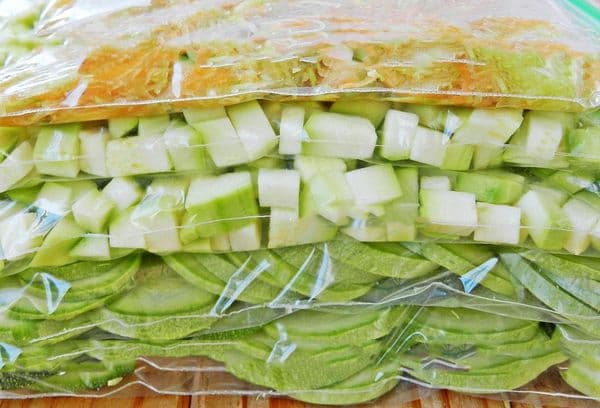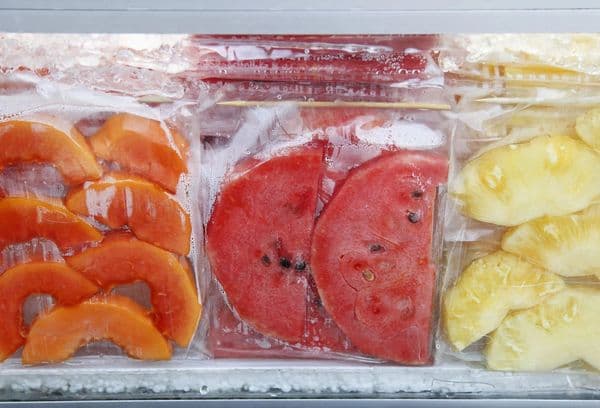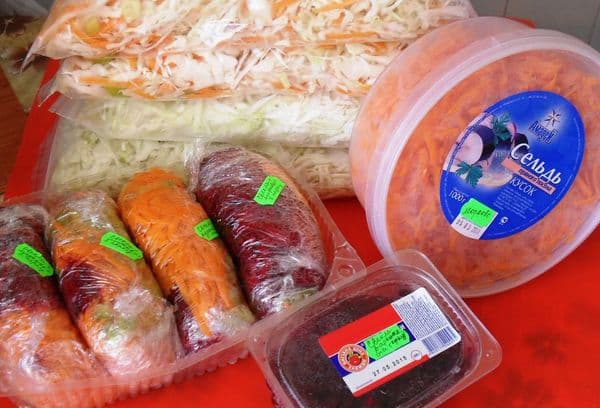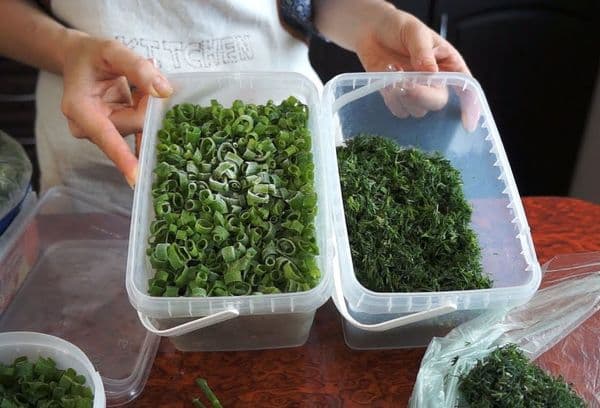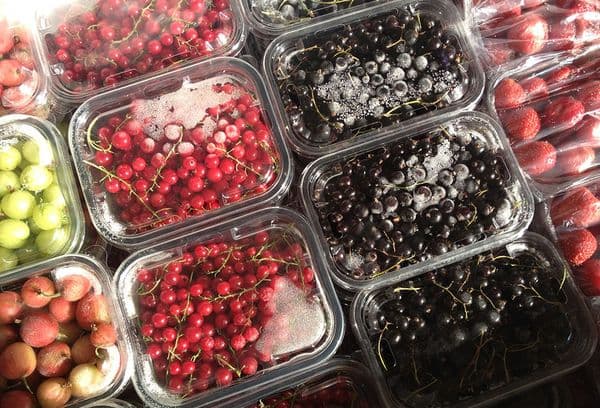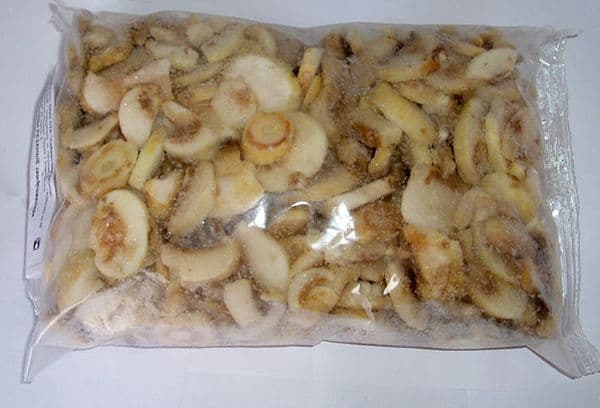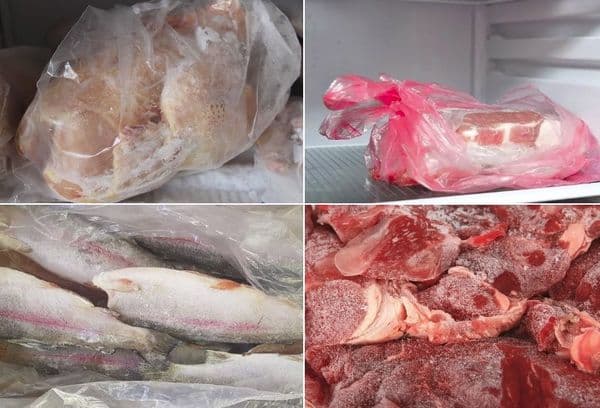What can you freeze for the winter in the freezer?
Content:
It's great to see a full freezer after the summer harvest. Freezing is quick and convenient; food is stored in the cold for a long time and remains healthy and tasty. So what can you freeze in the freezer for the winter? Various vegetables, herbs, fruits and berries, mixtures of different products, semi-finished products based on cereals, vegetables, meat and fish.
The benefits of freezing food
A freezer compartment in the refrigerator or a separate unit with several shelves provides a huge advantage. Many healthy and natural products are available only during a certain period, and in the freezer they will last from several months to one year.

All the benefits of storing food in the freezer:
- When blast freezing, products retain a maximum of nutrients in their composition, remain elastic, bright and aromatic, as if they were fresh.
- Storage does not require adding salt, sugar, or boiling, although some recipes use additional preparation of vegetables.
- Many fruits collected and frozen in summer are much healthier than those sold in supermarkets in winter.
- Spend a couple of days prepping your frozen foods and you'll have convenient portions throughout the winter. Freezing significantly saves the time that the housewife spends every day at the stove.
- Possibility of experiments, interesting forms of freezing for children's breakfasts.
- Saving money in winter.
Freezing has disadvantages only in two cases:
- If a product for which freezing is not recommended is stored in this way.
- If the appliance cannot provide a stable low temperature.
General rules
In order for frozen foods to be convenient for further preparation, they must be selected correctly. All fruits are taken ripe, but not overripe. Study recommendations for choosing natural vegetables and fruits if you do not have your own garden.
The magazine purity-en.htgetrid.com emphasizes: deformed, wrinkled, or pest-infested products are not suitable.
Everything must be washed and dried, including greens: excess moisture will harden, forming a crust of ice. Such a product takes up more space, and when thawed, it blurs and loses its taste.
Advice
To speed up the drying of the product, use the “cold air” function of the hair dryer.
You should also be careful when choosing storage containers:
- Use plastic containers with lids, freezer bags, ziplock bags, trays, and dairy cartons.
- Cling film or foil will do.
- By the way, there will be molds for ice, pastries, sweets, including shaped ones.
- Garbage bags, non-food plastic products, fabric bags, and wrapping paper are not suitable for storage.
Important
Re-freezing is always prohibited!
Another important point is the expiration date. The maximum storage period for vegetables, berries and fruits is a year, greens last up to 4-10 months, mushrooms - up to six months. You can't eat late. In order not to forget to freeze on time, always sign the packaging date and expiration date.
All these rules are extremely simple, but they should be followed unquestioningly.
Freezing vegetables and herbs
The first thing you should do after harvesting is freezing ripe vegetables and aromatic herbs. Products must be washed, peeled, stalks and seeds removed. You can store it whole, sliced or even pureed. It all depends on the further goals of the hostess. The best option is several cutting methods, so the menu will be varied.
General rule for vegetables
Pieces and other types of cuts are first frozen separately and then poured into a common bag. This way the products will not stick together.
What vegetables can be frozen at home:
- Tomatoes are frozen either in cubes or slices. The first option is useful for soups and stews, the second - for pizza and French meat. It is worth removing the skin from the fruits by dipping them in boiling water. Tomato puree is easily made using a blender. It is distributed into cups or ice trays.
- Cherry tomatoes can be frozen whole, just make a couple of punctures in the flesh to prevent it from cracking.
- Bell peppers are pre-cleaned from the stalk and seeds. Then they are left whole and used for stuffing or cut into strips and cubes.
- Cauliflower broccoli is very easy to store. The head of cabbage is first divided into inflorescences, then everything is washed, dried and distributed into bags. Broccoli is sometimes blanched. To do this, first keep the cabbage in boiling water for a couple of minutes, and then transfer it to ice water to cool.
- Eggplants are stored raw, blanched and baked. The finished fruit goes into the dish immediately after defrosting and is cooked within a couple of minutes. You will have to work longer with raw ones.
- It is preferable to boil zucchini and zucchini a little before storing. If this is not done, the pulp will have a bitter taste. Be sure to remove the peel and seeds. Then cut into convenient pieces and keep in boiling water for no more than 15 minutes. The cooled pieces are sent to the freezer.
- The method for freezing pumpkin is similar to working with zucchini and zucchini. It is frozen in cubes, in the form of puree, grated or blanched.
- Corn cobs can be frozen whole or as individual kernels. It is recommended to pre-blanch the heads of cabbage so that the grains better retain their color and sweetness.
- Green beans keep well in the cold; they are used both separately and in vegetable mixtures. The pods are first blanched.
- Cucumbers are also frozen despite their watery flesh. Small gherkins are stored whole, large fruits are cut and grated in a convenient way.
- It is convenient to store carrots in grated form for frying. The same goes for beets.
- The celery stalk can be frozen whole or in small pieces.
- Horseradish root is prepared in grated form.
Greenery
How to properly freeze different greens:
- Parsley, dill, cilantro, green onions are thoroughly washed, then dried and placed in portioned bags. Remove all air from the package. You can also puree the greens and store them in ice cube trays.
- It is recommended to cut and blanch the sorrel.
- Basil tastes best in olive oil: chop it into small pieces, mix with oil and pour into ice cube trays.
- Spinach leaves are rolled into tubes and tightly packed with cling film.
- Lettuce, arugula, watercress, tarragon, rosemary and other aromatic herbs are stored strictly dry and in tight, airtight packaging.
- Currant, raspberry and mint leaves for tea are frozen whole, but it is better to dry them.
Advice
Keep all foods in small portions. If you put everything into a common bag, you will have to regularly take it out and put it back. This harms the product.
Fruits and berries in the freezer
The list of fruits and berries for freezing is as extensive as the vegetable group. Which fruits tolerate low temperatures best:
- peaches, plums, apricots - you just need to remove the pit;
- pears are cut into slices or pureed with sugar;
- quince is stored in round slices or cubes;
- Apples are peeled and seeded, then they are pureed, grated, cut into cubes, etc.
Berries for freezing, list and recommendations:
- The basic rule: if the berry has a thick skin, then you can freeze it entirely, if the structure is soft, then prepare a puree.
- Grapes, currants, cherries, gooseberries, blueberries, and honeysuckle are stored entirely.
- Blast freezing will preserve the integrity of raspberries, blackberries and strawberries.
- The berries are sprinkled with sugar if they are not sweet enough.
- The puree is easily made using a blender. Mash soft strawberries and raspberries with a fork. Store the puree in ice cube trays or use an ice cream scoop maker.
- The berries in syrup remain sweet and are used to make compotes. To do this, mix sugar and water (1:2), melt the syrup and pour it over the fruit to half the height. After the syrup has cooled, the containers are sent to the freezer.
Use the turbo freezing mode: it is enough to keep fresh food in the chamber for a couple of hours so that it instantly freezes. After this, set the standard -18 degrees, or better yet -20-25.
Advice
To prevent food smells from mixing in the freezer, use one shelf for fruits, vegetables and mixtures, and another for meat products.
Mushrooms
Most edible mushrooms can withstand freezing. Freshly picked champignons, honey mushrooms, porcini mushrooms, aspen mushrooms, chanterelles, and saffron milk caps are sent for long-term storage.
How to quickly freeze mushrooms:
- Mushrooms are sorted for worminess.
- Everything is washed and dried.
- Small mushrooms are frozen whole, large ones - in pieces.
- Mushrooms can also be stored after cooking: keep them in boiling water for 5-7 minutes, cool and put them in containers.
Semi-finished products, mixtures
Ideas for preparing vegetables that will make cooking easier:
- Bell peppers stuffed with rice, minced meat or vegetables.
- A mixture with half-cooked rice, corn kernels, beans, peppers, green peas, etc.
- Standard set for soup: carrots, onions, beets, sweet peppers, tomatoes. Everything is lightly fried beforehand, but this is not necessary.
- Frozen onions and carrots separately.
- Homemade dumplings with potato and berry filling.
- Mixed greens for soup.
- Berry mixes for fruit drinks and compote: cherries, currants, raspberries, gooseberries, etc.
Meat and fish
You don’t need to know much about storing meat and fish. The products are thoroughly washed and dried, distributed into separate bags in convenient portions.
The shelf life of poultry is 7-12 months, pork - 6-10 months, beef - 12 months. Fish can be stored for 6 months to a year depending on the type.
What foods should not be frozen
What should not be kept in the freezer, especially if the device does not have a blast freezing function:
- Raw onions and garlic - they become limp and tasteless.
- Hard cheeses can only be blast frozen; soft cheeses are best stored in the refrigerator.
- Dairy products - yoghurts, sour cream, etc. Their condition after defrosting leaves much to be desired.
- Whole fruits with a lot of moisture in them, such as melons and watermelons. In this case, it is better to give preference to puree or juice.
- Some leafy greens lose their shape and darken: lettuce, spinach, sorrel.
- Pieces of radishes, turnips, and white cabbage leaves spoil in the freezer.
Make full use of your freezer: provide yourself and your family with healthy frozen food so that your winter menu is varied, tasty and rich in nutrients.
